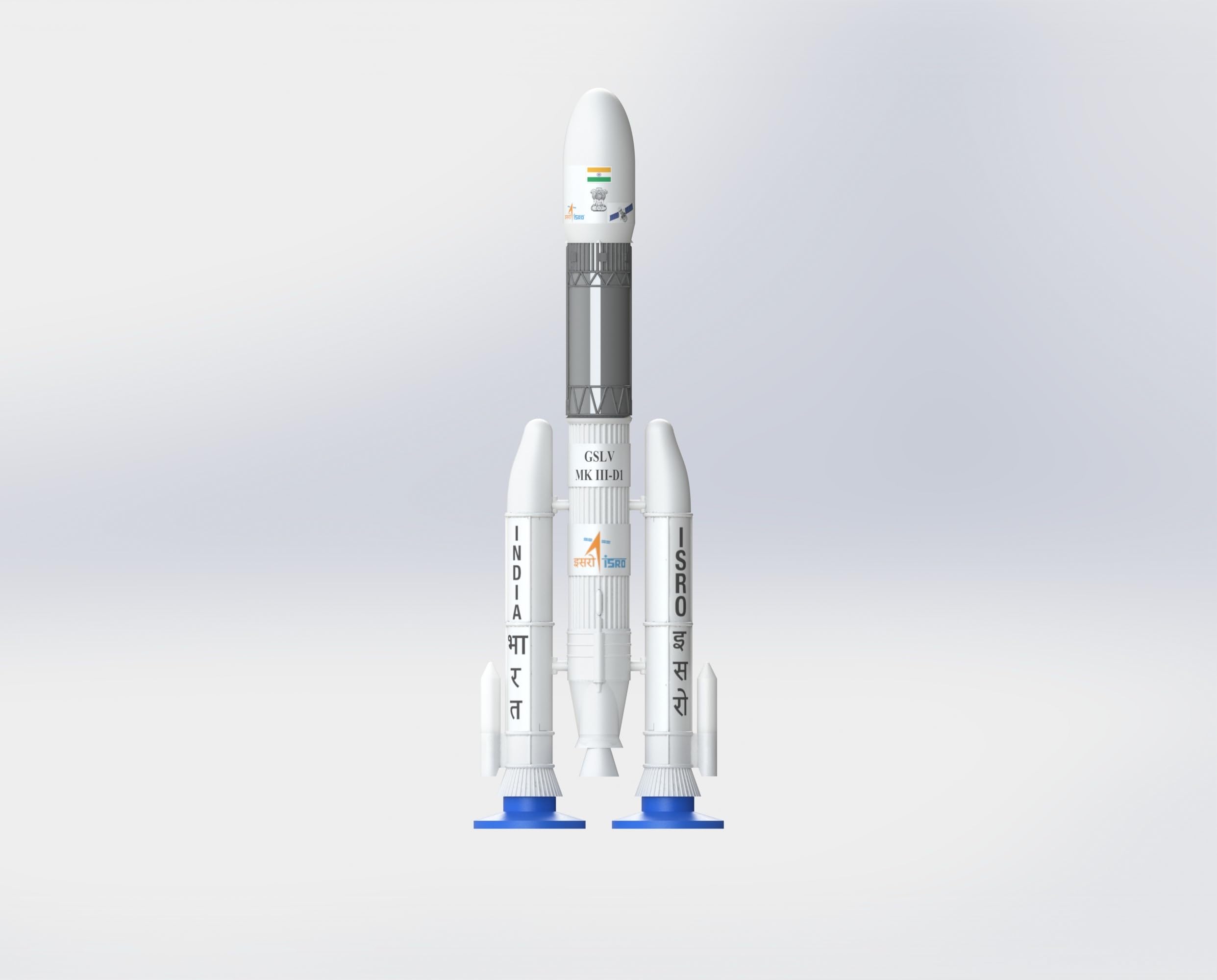



This is LMV3-D1 Non Working Static Toy Model. its Total Height is 26cm (After Completion). Width of 2 Base is 8cm. LMV3-D1, Chosen to launch Chandrayaan-2 spacecraft, is a three-stage heavy lift launch vehicle developed by ISRO. The vehicle has two solid strap-ons, a core liquid booster and a cryogenic upper stage. LMV3-D1 is designed to carry 4 ton class of satellites into Geosynchronous Transfer Orbit (GTO) or about 10 tons to Low Earth Orbit (LEO), which is about twice the capability of the GSLV MK II. The two strap-on motors of LMV3-D1 are located on either side of its core liquid booster. Designated as ‘S200’, each carries 205 tons of composite solid propellant and their ignition results in vehicle lift-off. S200s function for 140 seconds. During strap-ons functioning phase, the two clustered Vikas liquid Engines of L110 liquid core booster will ignite 114 sec after lift -off to further augment the thrust of the vehicle. These two engines continue to function after the separation of the strap-ons at about 140 seconds after lift -off. The first experimental flight of LVM3, the LVM3-X/CARE mission lifted off from Sriharikota on December 18, 2014 and successfully tested the atmospheric phase of flight. Crew module Atmospheric Reentry Experiment was also carried out in this flight. The module reentered, deployed its parachutes as planned and splashed down in the Bay of Bengal. The first developmental flight of LMV3-D1 successfully placed GSAT-19 satellite to a Geosynchronous Transfer Orbit (GTO) on June 05, 2017 from SDSC SHAR, Sriharikota. GSLV MKIII-D2, the second developmental flight of GSLV MKIII successfully launched GSAT-29, a high throughput communication satellite on November 14, 2018 from Satish Dhawan Space Centre SHAR, Sriharikota GSLV MKIII-M1, successfully injected Chandrayaan-2, India’s second Lunar Mission, in to Earth Parking Orbit on July 22, 2019 from Satish Dhawan Space Centre SHAR, Sriharikota
Trustpilot
1 day ago
2 days ago